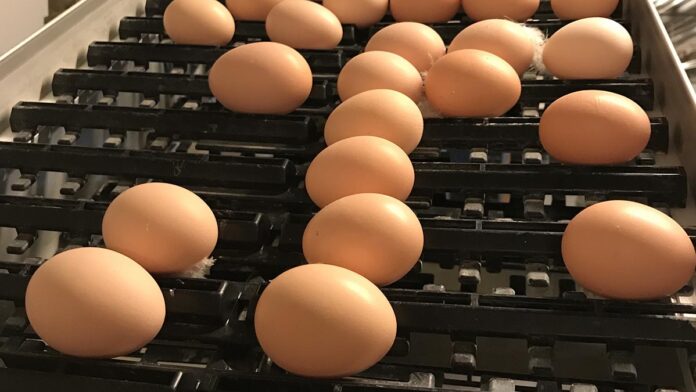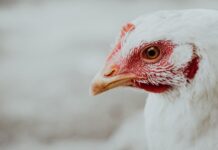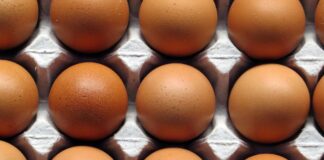
How robust management and proactive measures can drive best practice for egg production on poultry farms.
In partnership with Cobb, this article examines best practice in egg production, focusing specifically on promoting strong shells and minimising the occurrence of floor eggs. “Both of these factors can have a significant impact on egg quality,” says Mert Yalcinalp, Senior Technical Manager at Cobb. “If left unchecked or mismanaged, overall profitability can be drastically affected.”
Cobb alongside Vencomatic Group, provide some key advice on these two issues, drawing on their experience and expertise as well-regarded providers of high-performance broiler breeders and equipment.
Shell quality
Shell quality affects egg quality which, ultimately, affects chick quality.Poor shell quality can cause issues in the incubator, such as microbial contamination (rots and bangers) or late embryonic mortality, while issues post-hatch may result in increased incidences of yolk sack infections. The shell is the first line of defence for protecting the embryo from physical damage, as well as providing it with calcium and assisting in the regulation of gas exchange and moisture.
It is clear that shell integrity must be a high priority. But what criteria should we meet to prevent complications? Firstly, a shell thickness of at least 0.28mm is optimal. Viable chicks rarely hatch from eggs with poor shell thickness due to excessive moisture loss during incubation. As the hen ages, her eggs increase in weight and percentage of yolk whilst the percentage of albumen decreases. The shell, however, does not increase in the same way, resulting in shell thinning as the breeder ages and ultimately a reduction in shell integrity. To combat this, older breeder flocks can be supported by supplementing trace minerals (Zn, Mn), vitamin D3 and oyster shell, particularly in hot seasons.
A uniform, brown shell colour is often a sign of good quality. If an egg is pale brown or white in colour, this should act as the first warning sign for broiler breeders. We should also remember the role of the cuticle, which acts as the first line of defence against microorganisms and controls moisture diffusion from the egg. Although there is no correlation between degree of pigmentation and cuticle deposition, there appears to be an advantage to improved cuticle coverage. Preventing disease transmission in the hatchery could potentially improve poultry health by selecting for improved cuticle deposition.
“Monitoring shell quality characteristics is essential for the health of your flock, and any fluctuations should be addressed promptly,” says Mert. “Without strong shell quality, hatching good quality chicks is simply impossible.”
Preventing floor eggs
Nesting systems are designed to maximize the production of clean settable eggs that are free of contamination and exposure to moisture. Unfortunately, a producer will occasionally experience a portion of the flock that reject the nest and consistently lay eggs on the floor and slats. Nest site selection and nest building are very strong behaviours for hens. Once the floor egg habit begins, it is very difficult or nearly impossible to change.
In extreme cases, floor eggs can lead to reduced production, lower hatch performance and, ultimately, reduced chick quality and poor broiler performance. “There is no such thing as a clean floor egg,” says Freek Leijten, Product Manager at Vencomatic Group, provider of innovative poultry management systems. “A visually clean egg collected from the litter surface may be contaminated by up to 30 times more than a clean nest egg.”
During different stages of production, certain measures can be implemented to reduce the incidence of floor eggs.
Rearing Period
- Use double wires or rolling parts on the drinkers and the feeder systems so the pullet is unable to grab and balance on the drinker and feeder system. This is advised over electric countermeasures, which can instil a fear of jumping in the breeder.
- Choose the right type of perch. If the birds are going to be transferred to an automatic nest box system, choose flat perches that are preferably manufactured with the same slats (perches) as those found on the automatic nest box. This will encourage the pullets to jump and adapt more easily in the production house.
- Position slat type perches under one nipple line to encourage jumping. Pullets that jump up on the slats to drink will be provided immediate positive reinforcement. Set the slat height at no higher than 45 cm.
- Incorporate enrichments into pan feeders and reward jumping. Enrichments can be placed with ramps for access when necessary.
- Very low light intensity (less than 1 lux) during rearing can reduce bird activity. Set the lux between 5 to 7 for ideal activity levels.
Production Period
- Collect eggs regularly (at least four collections per day) so that the hens have minimal opportunity to see eggs on the litter.
- Be sure the hen lays her first egg in the nest to establish the correct behaviour.
- Always follow the breed standards for body weight and conformation.
- Implement ramps if some birds have difficulty jumping onto the slats.
- Initially prepare the production house with less litter (i.e. 2 to 3 cm). This recommendation is especially important in warmer and lower humidity areas. Once laying patterns have been established (post-peak), fresh bedding can be added to help reduce pododermatitis and leg issues, especially in males. This will help maintain flock fertility and hatchability.
- Transfer flocks at least 2 weeks before the first egg. The pullets need time to adapt to the new equipment in the production house.
- Automatic nest boxes should stay closed prior to the first egg, so that the birds will learn that the nest box is a place to lay eggs, not to sleep.
- Prevent shadowed areas in the barn. The hen will search for relatively dark areas to lay and, if they find one, will do so there instead of the nest.
- 80% of birds will lay between 2 to 6 hours after the lights go on. Any disruptive activity during this 4 hour period can result in floor eggs. This includes feed and water activity. If the majority of feed and water intake is during this time frame, the birds will choose food and/or water instead of going to lay.
- Feeder heights should allow the birds to freely pass under and drinkers should not be crowded.
- Growers should always follow the manufacturers’ technical suggestions for nest configurations and not exceed the suggested number per hen or use less product than recommended.
- Interiors of the nest boxes should be clean and free from parasites like red mites, which can disturb the birds and cause the hens to actively avoid the nests.
An optimal nest is your strongest protection against floor eggs. According to a study by the Vencomatic Group on how a nest needs to be designed for maximum nest acceptance, there are three important factors:
- Wooden nest walls: when a hen can choose, 80% of hens will choose a wooden nest.
- Prevent draughts: hens are very sensitive and avoid nests with draughts, resulting in more floor eggs.
- Nest design: Nest design is important for the number of nest inspections and visits that the hen makes. If the nest is too big, there will be more disturbance inside the nest, resulting in more floor eggs.
It is important to be vigilant when a young flock is coming into production. Any floor eggs that you find can provide a clue as to why the hen chose to lay on the floor rather than the provided nest, offering an opportunity to solve the problem before other hens are influenced. A proactive approach is essential for managing floor egg production. “Keen observation and taking action is key,” adds Freek. “Bad laying habits are hard to break but taking precautions and working hard will set the flock up for the production of clean settable eggs.”
Strong management
“The most effective strategy for best practice in egg production is robust management,” adds Mert. “Invest in measures that promote resilient shell quality and prevent floor eggs. With diligence and precise strategies, best practice can be consistently established, giving your flock the best possible foundation for strong egg production”.

















